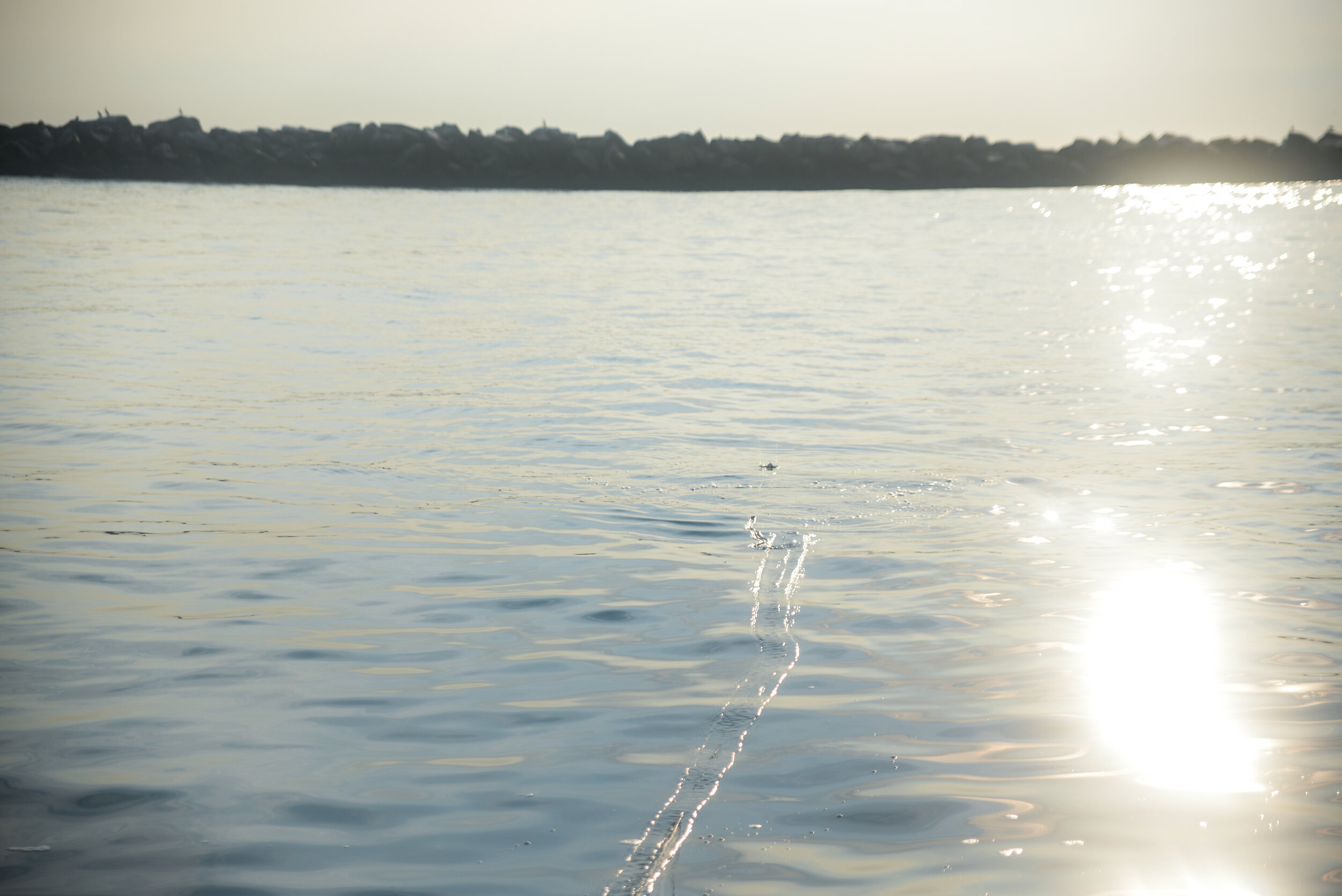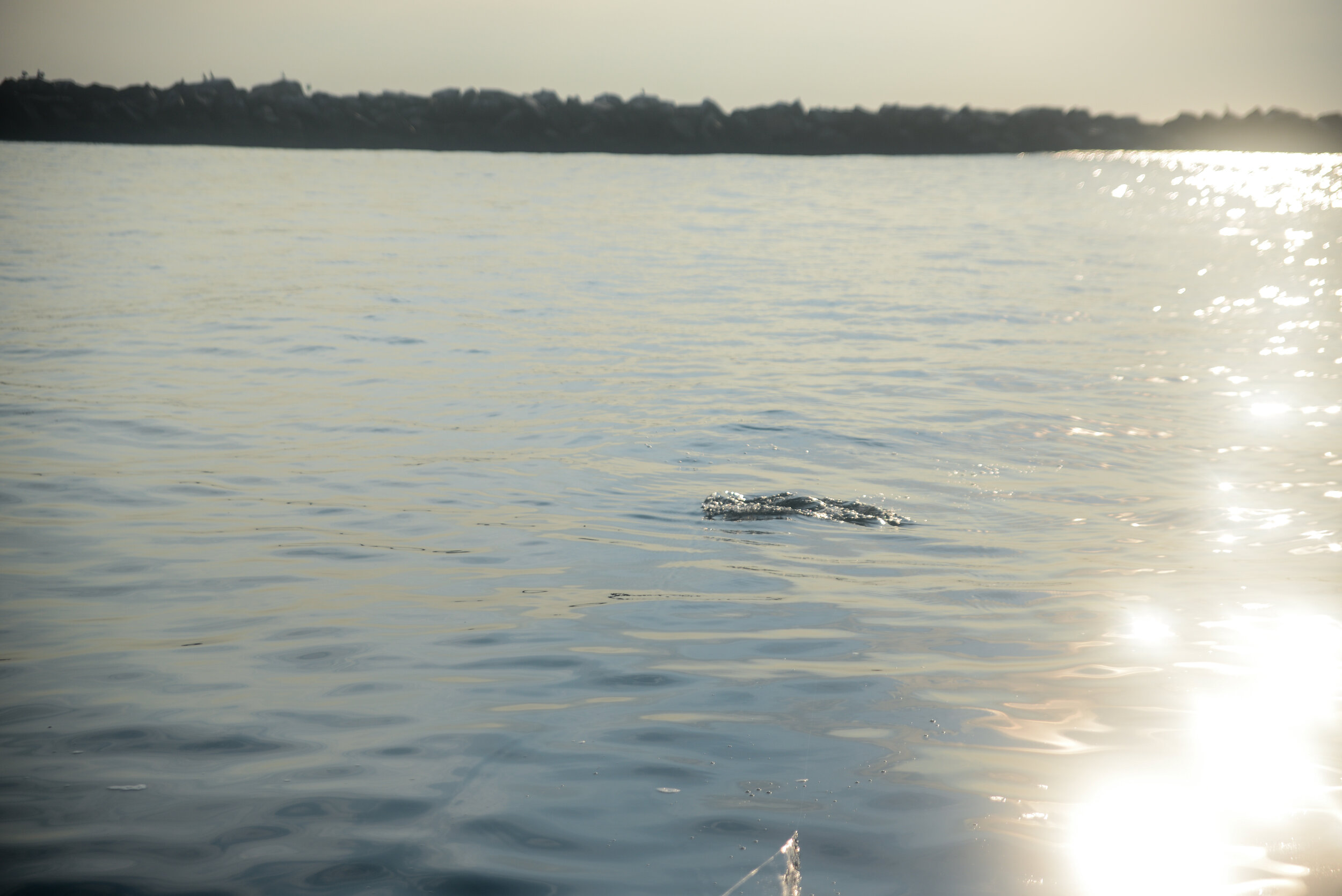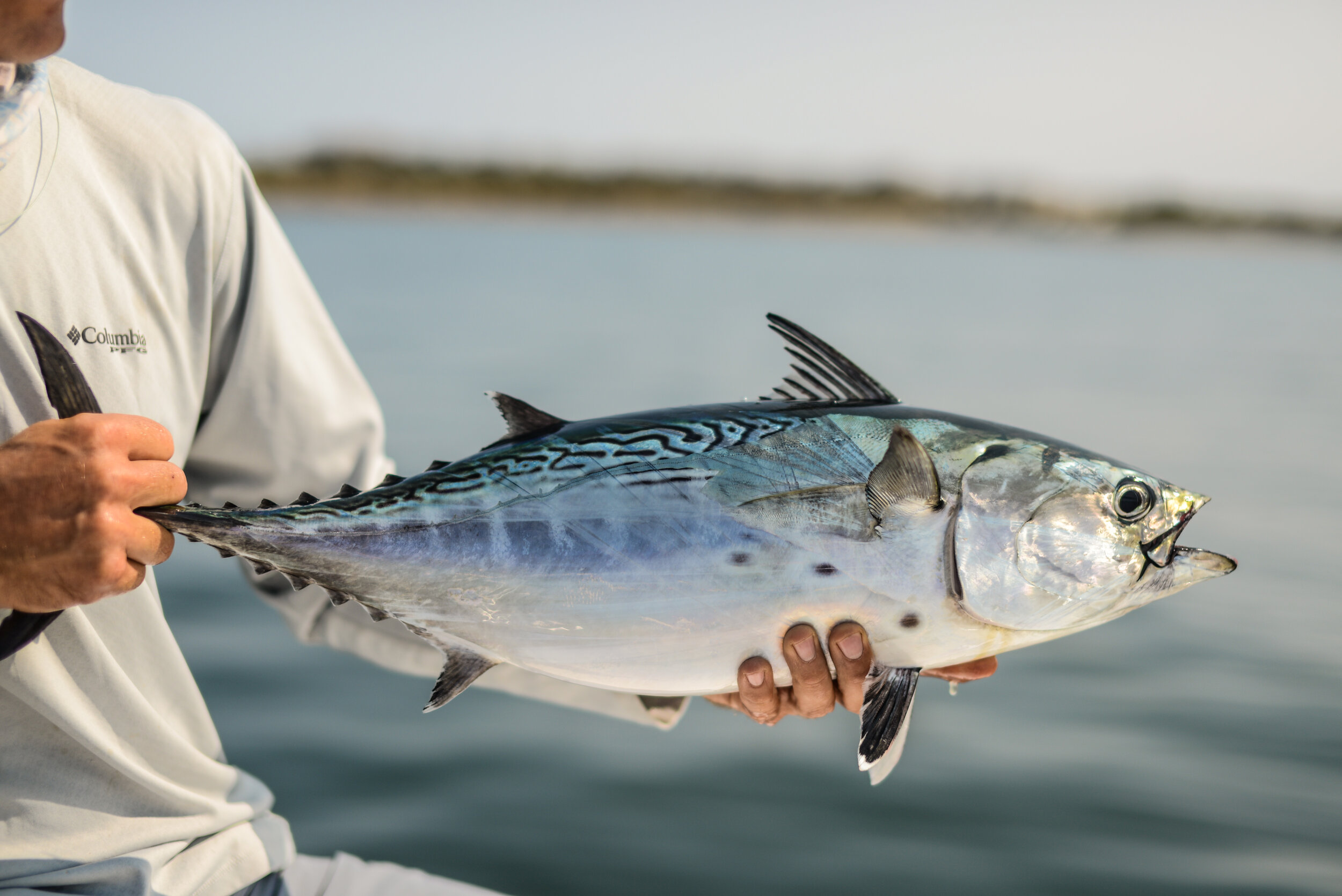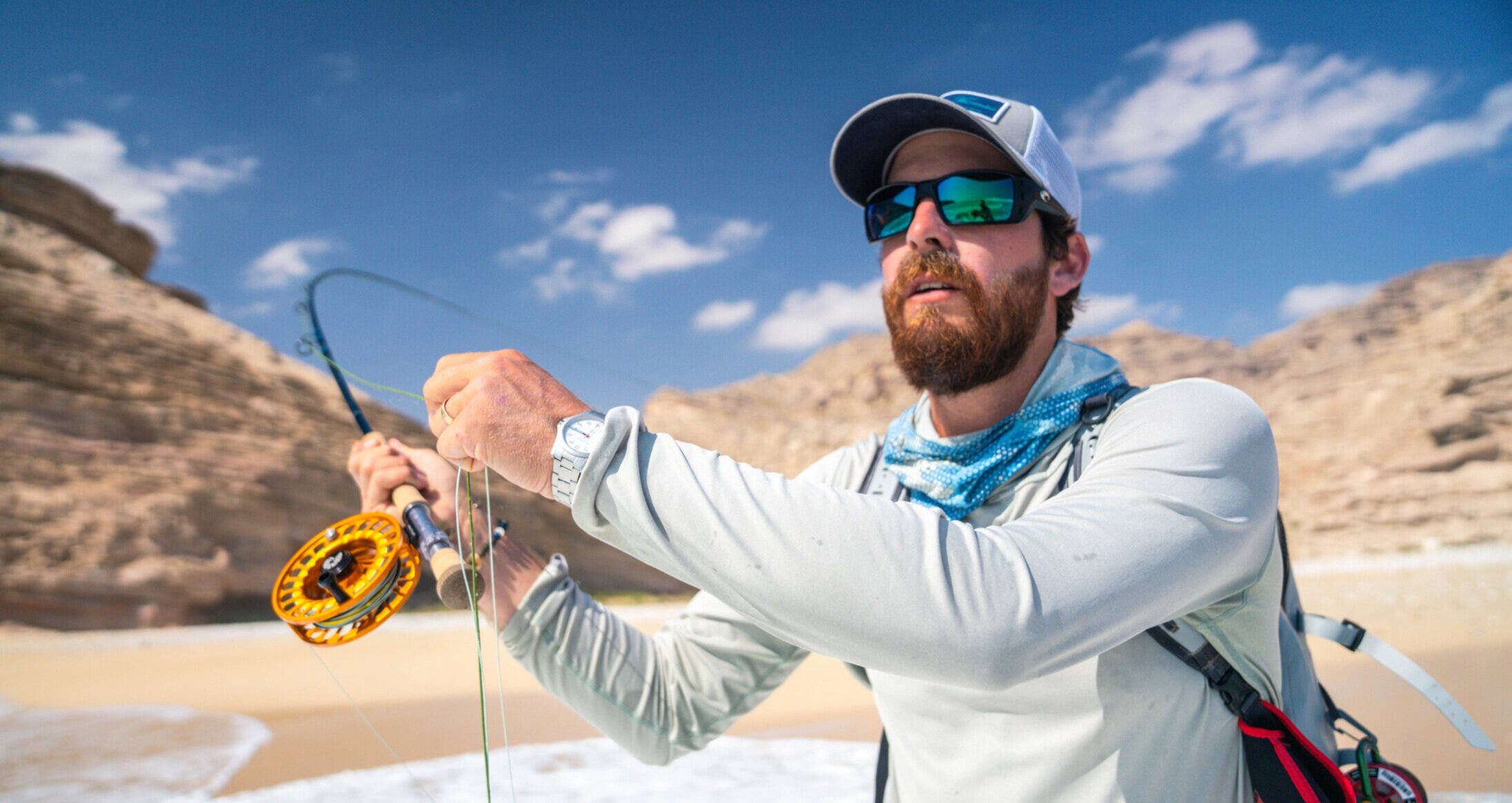5 Tips to Hone Your Craft
As a guide I spend 100’s of hours each season watching my clients present to fish. Every interaction between angler and fish is a learning experience. The nuances of each dance reveals why we were successful, or to the contrary, why we failed. Over time, distinct patterns develop. Common mistakes continue to surface as every angler works to grow. Below, I’ll discuss a few tweaks that will keep your fly in the zone longer, avoid missed strikes and ultimately get more fish to hand.
Tight Line Presentation
Once you’ve got your eyes locked on the target, whether it’s a cruising fish or an enticing hold, start your cast. As you shoot line to the target, smoothly feather the line through your line hand. With the fly rolling out, begin to clamp your fingers around the line so your presentation lands at the target with no slack in the system.
Matt Srebnik delivers a fly to a cruising bonefish on South Andros in the Bahamas. As Matt fires his presentation cast, line is sliding through the fingers of his left hand helping to control the distance of his cast. Just as the fly lands, Matt clamps down on the fly line ensuring a tight presentation. Ultimately the result is a cast that will roll out straight, in front of the target, with no slack in the system. This is an essential tactic for sight fishing.
As the fly lands, the rod hand should be extended out in front of the angler so a long strip can be made to remove any additional slack from the system. Slack can get into the system in a number of ways including: not properly compensating for the wind, an under or overpowered cast, rushing the cast (not pausing long enough on the back or forward cast), or casting to a target at a distance beyond your ability.
In Maine, when blind casting to the rocks, fish will often eat the fly shortly after it lands. I’ve seen this many times across multiple fisheries. Slack in the system might be the difference between a missed fish and a caught fish.
If you’re taking several strips to get your line tight while your fly floats lifelessly in the “zone” you’re missing out on valuable time enticing your quarry to strike. This is very important when sight fishing and when presentations need to be precise. This tactic can also be important while casting to blitzing fish. In the series of images below, while fishing with Zak Robinson of Rising Tide Anglers, you can see the fly being delivered with a tight line to a small pod of feeding false albacore. As the fly lands, the albie eats. This is a perfect example of the necessity of a tight presentation. If that fly had landed with slack in the system the fast albies would have already moved on and the fleeting opportunity would have vanished.
Stripping Ready Position
Fishing is an athletic pursuit. It requires spacial awareness, hand eye coordination and a whole lot of timing. We’re constantly analyzing wind, currents, our target, a moving fish, and how our fly is affected by these different variables.
What I often see is anglers resting their rod hand tight to their body. From this position your retrieval strips are shortened, the length of your strip sets are cut in half, and when lifting line off the water to recast your rod hand is in position that shortens the casting stroke.
Like all athletics, being in the correct ready position can be the difference between success or failure. Stripping the fly is no different. I encourage an active ready position anytime your fly is in the water. The ready position that I like to see, not only sets the angler up to best bring the fly to life, but it also prepares the angler to deliver a proper hookset on the fish.
The author extends his rod hand comfortably towards his target setting himself up to execute a 5 or 6 foot long strip. Ph: Dylan Schmitz from Southern Oman with No Boundaries.
So what is the ideal stripping ready position? On your final presentation cast, follow through with your rod hand fully extended in front of you. Continue holding your hand actively but comfortably in that position for the remainder of your retrieval. I like this position for the following reasons:
You are set up to make long 5 to 6 ft strips. With your rod hand extended out in front you can now reach all the way forward, grab your line to strip, and finish your stripping stroke with line hand fully extended behind you. This technique is very useful when bringing the fly to life and delivering a strip set.
It is common for casters to land their fly in the water with some slack in the system. Having your rod hand extended allows you to quickly eliminate slack so your fly comes to life immediately.
This position prepares you to recast quickly. With your rod hand extended in front of you, you are in prime position to lift your line off the water with a full casting stroke.
Keep Your Fly in the “ZONE” Longer
Whether you are chasing trout, stripers, golden dorado, or bonefish there is a cadence that your guide is looking for you to emulate. It’s a flow that we’ve seen work and we believe in the method. If you aren’t fishing with a guide, observe exactly where you are getting strikes and where you are not. It sounds obvious but don’t waste time with your fly in water that isn’t producing strikes. In your first hour on the water, pay extra attention to these details and then adjust your fly placement accordingly throughout the day. After several hours of fishing and casting this strategy can make a huge difference in the amount of time your fly is spending in the “zone”. Deploy this strategy in combination with prospecting casts. Every now and again cast to water that looks fishy but may not be delivering strikes as frequently… these are situations where you may log some interesting new observations.
Here, we are making long casts, fishing our fly through the “wash”, which is the white colored water where we anticipate the fish to be feeding. We are fishing an intermediate line so that our fly will hover just beneath the surface and sink at a rate of only 1” to 2” per second. We are casting tight to the rocks then stripping in about 30’ of line through the swirling shallow water. We aren’t wasting time stripping the fly all the way to the boat because we are purposefully overlooking the deeper water further from the rocks. There may be stripers in that deeper water but they aren’t our target right now. If we were to focus on the deeper water we would be switching to a heavier sinking line to best present to those fish. Perhaps we’ll see signs that entice us to change strategies which is why it’s always important to keep your eyes open, watch for follows, and be flexible.
Minimize False Casts
Casting is fun as hell. It’s possibly one of the top reasons you got into this sport. I love the flow of casting and crave the feeling of a fly rod in my hand when I’m off the water. There is something so satisfying about properly loading the rod and delivering the fly just where you want it to go.
Despite how much fun it may be to gain momentum and eventually deliver a well placed cast, what is going to make you a more effective angler is presenting your fly at the right distance with the LEAST amount of false casts. Think about these tips to help increase the speed of your delivery:
Let line out on your back cast! Most anglers let line out on their forward cast but once you get in the habit of releasing line on the back you’ll be able to reach the target distance much more quickly. When releasing line on your back cast make sure you pause at the end of your stroke until your line fully unrolls. Effective casters can shoot more than 20 feet of line on the back cast allowing them to cast well over 60 feet with only a couple of false casts.
Shooting line to your target on the presentation cast can also help to reduce false casts. If you are carrying 30 feet of line (the common length of most shooting heads) through the air and have another 20 feet of line at your feet try powering your cast forward then feather line through your line hand until you’ve straightened your system out to the target. You do not have to carry 60 feet of line through the air to make a 60 foot cast.
Don’t rush it! A quick way to rob the cast of power is to lose patience and not let your line fully roll out behind you on the back cast. If you try to power forward while your line is not tight behind you you’ll have no energy to load the rod. Feel free to watch your back cast until you can blindly sense that your back cast is tight before initiating the forward cast. I rarely seen someone pause TOO long on their back cast.
Moments after 30 feet of line was released behind the author on the back cast, Kyle pinches the line with his left hand and prepares to power forward and deliver the fly to the target. This was a windy day and releasing line on the back cast was essential to minimize false casts. Photo: Dylan Schmitz
Care… LESS!
The more you fish, the more you realize how much of a mental game it truly is. The more you force, rush and get inside your own head, the less effective you are as an angler. Take this situation for example and check out the caption below.
Probably the most tense situation in all of fly fishing. A feeding permit on the flat, zero wind, and a guide that has worked his ass off to get you in the perfect position to make a 50 foot upcurrent shot. What’s your first step? For me it’s a deep breath. I try to let go of the outcome. Confidence is your best friend in this situation. Deliver the fly with full belief that today is your day. If you have a sliver of doubt, let that go on your next exhale. It’s okay if the permit gives you the middle finger or the striped bass spooks; you’ve just logged important observations and notched another failure under your belt. The next time you step up to the plate you’ll be that much closer to success. In this case, the caster is David Mangum, tarpon guide and outfitter. Channel your inner Mangum and act like you’ve been here before! Failure goes hand in hand with success. Ph: Dylan Schmitz
Conclusion
Nothing beats time on the water. Get out there, cast, enjoy and repeat. Don’t be hard on yourself or take it too seriously. We’re all poised to continue learning until our final outing on the water, no matter who you are or what skill level you come programmed with. Be confident but not cocky. Work within your limits but push the boundaries and pay attention to the details, they are all around us.








